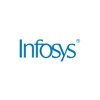
i
Gradious Technologies
Filter interviews by
Gradious Technologies Devops Engineer Interview Questions and Answers
Gradious Technologies Devops Engineer Interview Experiences
1 interview found
I applied via LinkedIn and was interviewed in Apr 2024. There were 2 interview rounds.
(2 Questions)
- Q1. Tell me about tcp ip
- Ans.
TCP/IP is a set of protocols that governs the way data is transmitted over the internet.
TCP (Transmission Control Protocol) ensures reliable, ordered, and error-checked delivery of data.
IP (Internet Protocol) handles the addressing and routing of data packets.
TCP/IP is a suite of protocols including HTTP, FTP, SMTP, and more.
It operates at the transport layer of the OSI model.
TCP/IP uses a client-server model for commu
- Q2. Tell me about osi
We can see in google
Skills evaluated in this interview
Top trending discussions






Interview questions from similar companies

I applied via Naukri.com and was interviewed in Mar 2021. There were 3 interview rounds.
Interview Questionnaire
1 Question
- Q1. Terraform, CI/CD definition, Git basic, Pipeline mostly in integration side
Interview Preparation Tips

I applied via LinkedIn and was interviewed in Apr 2021. There were 5 interview rounds.
Interview Questionnaire
1 Question
- Q1. Lots of questions and all were scenario based... About kubernetes, docker, Azure and Pipelines..
Interview Preparation Tips

Devops Engineer Interview Questions & Answers
Test Yantra Software Solutionsposted on 11 Jun 2022
I applied via Walk-in and was interviewed before Jun 2021. There were 4 interview rounds.
30 aptitude questions 45min
Any ongoing topic and we have to talk and showcase our communication skills
(1 Question)
- Q1. It was face to face interview. Questions regarding Java, Linux, DBMS and we have to right logic for a program
(1 Question)
- Q1. Discussion about salary and family background thats jt
Interview Preparation Tips

Interview Questionnaire
1 Question
- Q1. What is stash
- Ans.
Stash is a Git repository management tool that allows users to stash changes without committing them.
Stash is a feature of Git that allows users to temporarily save changes without committing them to the repository.
It is useful for when a user needs to switch to a different branch or work on a different feature without losing their current changes.
Stash can also be used to save changes that are not yet ready to be comm...
Interview Preparation Tips

I applied via Campus Placement and was interviewed before Apr 2020. There were 5 interview rounds.
Interview Questionnaire
1 Question
- Q1. Questions related to networking, cloud.
Interview Preparation Tips

I applied via Job Portal and was interviewed before May 2020. There were 3 interview rounds.
Interview Questionnaire
1 Question
- Q1. Mostly technical questions and they considered background profile too
Interview Preparation Tips

I applied via Naukri.com and was interviewed in Jun 2021. There were 3 interview rounds.
Interview Questionnaire
1 Question
- Q1. Asked questions on the skills that mentioned on resume, artifactory,sonar,jenkins,git?
Interview Preparation Tips
I applied via AngelList and was interviewed before Oct 2021. There were 3 interview rounds.

Coding related to Automation Testing
Aws Architectural questions and user experience
Interview Preparation Tips

Devops Engineer Interview Questions & Answers
Devops Technologiesposted on 19 Feb 2024
I appeared for an interview in Jan 2024.
Bash script tamp file
(2 Questions)
- Q1. What is pods in kubernates
- Ans.
Pods in Kubernetes are the smallest deployable units that can run multiple containers.
Pods are used to group containers that need to work together, such as a web server and a database.
Each pod has its own IP address and can communicate with other pods in the cluster.
Pods can be easily scaled up or down based on the workload requirements.
Pods are managed by the Kubernetes scheduler and can be automatically restarted if
- Q2. What is deployment
- Ans.
Deployment is the process of releasing software or code changes into a live environment.
Deployment involves transferring code from a development environment to a production environment.
It ensures that the software or code changes are available for end users to use.
Deployment can be automated using tools like Jenkins or Ansible.
Examples of deployment include releasing a new version of a mobile app or updating a website
Skills evaluated in this interview
Gradious Technologies Interview FAQs
Tell us how to improve this page.
Interview Questions for Popular Designations
- Senior Devops Engineer Interview Questions
- AWS Devops Engineer Interview Questions
- Devops Interview Questions
- Cloud Devops Engineer Interview Questions
- Azure DevOps Engineer Interview Questions
- Devops Consultant Interview Questions
- DevOps Intern Interview Questions
- Lead DevOps Engineer Interview Questions
- Show more
Gradious Technologies Devops Engineer Interview Process
based on 1 interview
Interview experience
Interview Questions from Similar Companies
Gradious Technologies Devops Engineer Reviews and Ratings
based on 1 review
Rating in categories
|
Full Stack Developer
4
salaries
| ₹4 L/yr - ₹4 L/yr |
|
Associate DevOps Engineer
4
salaries
| ₹3 L/yr - ₹6 L/yr |
|
Software Engineer
3
salaries
| ₹4 L/yr - ₹5 L/yr |
|
Associate Software Engineer
3
salaries
| ₹1 L/yr - ₹4 L/yr |
|
Accountant
3
salaries
| ₹3 L/yr - ₹3 L/yr |

Adda 247

Futurense Technologies

Prepca Eduserv

Airblack
- Home >
- Interviews >
- Gradious Technologies Interview Questions >
- Gradious Technologies Devops Engineer Interview Questions










